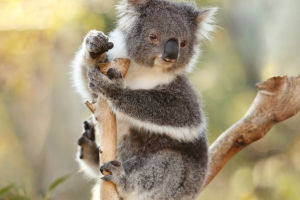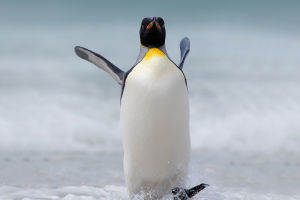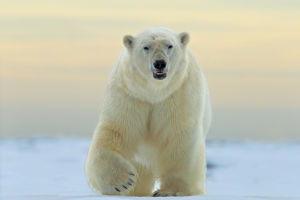Polar bears, hailed as the "Kings of the Ice," are among the most magnificent terrestrial predators on Earth. Living in the frigid Arctic environment, polar bears reign supreme in the snow-covered tundra, using their immense strength and agility to dominate the food chain.
However, with the intensifying effects of global climate change, their habitat is rapidly deteriorating, making polar bears one of the symbolic victims of this crisis.
1. Biological Characteristics
Polar bears are the largest terrestrial carnivores, with adult males typically measuring between 2.4 and 3 meters in length and weighing between 450 and 600 kilograms.
Females, on the other hand, are smaller, weighing between 150 and 300 kilograms. Their thick fur and substantial fat layers help them withstand the extreme cold of the polar region. Despite their white fur, which is hollow, polar bears can absorb heat from sunlight, and their color provides excellent camouflage, allowing them to approach their prey unnoticed.
Although classified as carnivores, polar bears have a relatively narrow diet, primarily feeding on seals. They rely heavily on thick ice to hunt, often waiting near seal breathing holes to launch sudden attacks. Due to their large size and high metabolic needs, polar bears require significant fat reserves to survive during extended periods of food scarcity and winter hibernation.
2. Habitat
Polar bears inhabit the sea ice regions surrounding the Arctic Circle, including the Arctic regions of Canada, Greenland, Norway, and the United States (Alaska).
Sea ice is not only their primary hunting and foraging platform but also plays a crucial role in their reproduction and nurturing of young. Each year, as the seasons shift between spring and summer, polar bears migrate along with the movement of sea ice to stay within their prey's range.
However, the polar bear's heavy dependence on sea ice makes them particularly vulnerable to climate change. As global temperatures rise, the Arctic sea ice is melting at an accelerating rate, reducing the range and food sources available to polar bears, further threatening their survival.
3. Impact of Climate Change
In recent years, the Arctic region has warmed more than twice as fast as the global average, leading to a continuous reduction in the summer sea ice area. For polar bears, this means they must swim farther and expend more energy to find food and suitable habitat.
Many polar bears are becoming increasingly emaciated, with declining reproductive rates. Female bears, in particular, need abundant fat reserves to nurture their cubs. If their hunting time is shortened, they may not be able to give birth to sufficiently healthy cubs.
Climate change has also increased the frequency of polar bear encounters with humans. As sea ice diminishes, polar bears are forced to venture more often into human-inhabited areas in search of food. This not only endangers the safety of residents but also escalates human-wildlife conflicts.
4. Conservation Efforts
Given the severe survival challenges polar bears face, the international community has implemented several measures to protect this endangered species. In 1973, four Arctic nations—the United States, Canada, Norway, and Denmark—signed the Agreement on the Conservation of Polar Bears.
This agreement aims to protect polar bears by limiting hunting and reducing habitat destruction. However, as climate change becomes the greatest threat to polar bears' survival, traditional conservation measures seem insufficient.
Modern polar bear conservation efforts focus on addressing the long-term effects of climate change, such as reducing global greenhouse gas emissions, slowing the rate of glacial melting, and protecting the Arctic environment.
Scientists are also exploring artificial intervention measures, such as providing alternative food sources for polar bears when sea ice decreases or relocating some polar bears to new habitats. However, it remains to be seen whether these measures will be effective.
Polar bears are one of the most iconic animals on Earth, and their survival status directly reflects the health of the Arctic ecosystem. As climate change intensifies, the future of polar bears is fraught with uncertainty. Nevertheless, with global cooperation and sustained efforts, we still have a chance to preserve the icy world that polar bears depend on for their survival.


